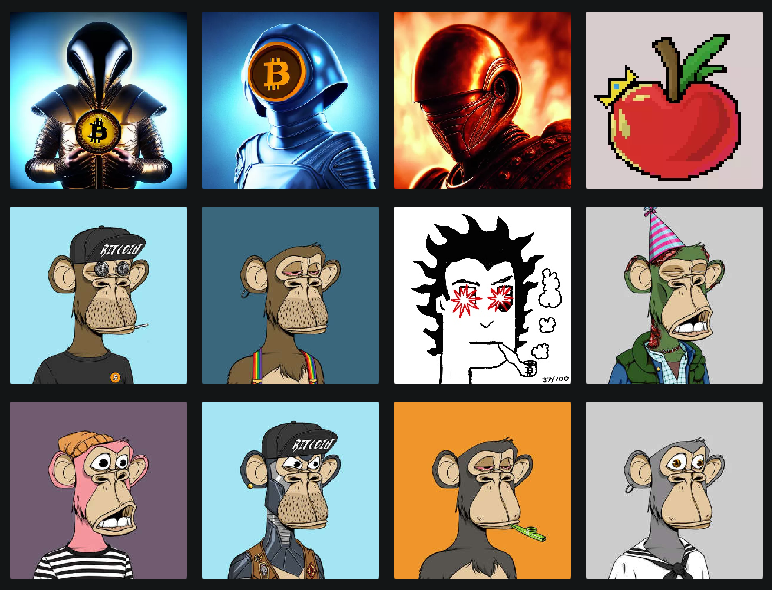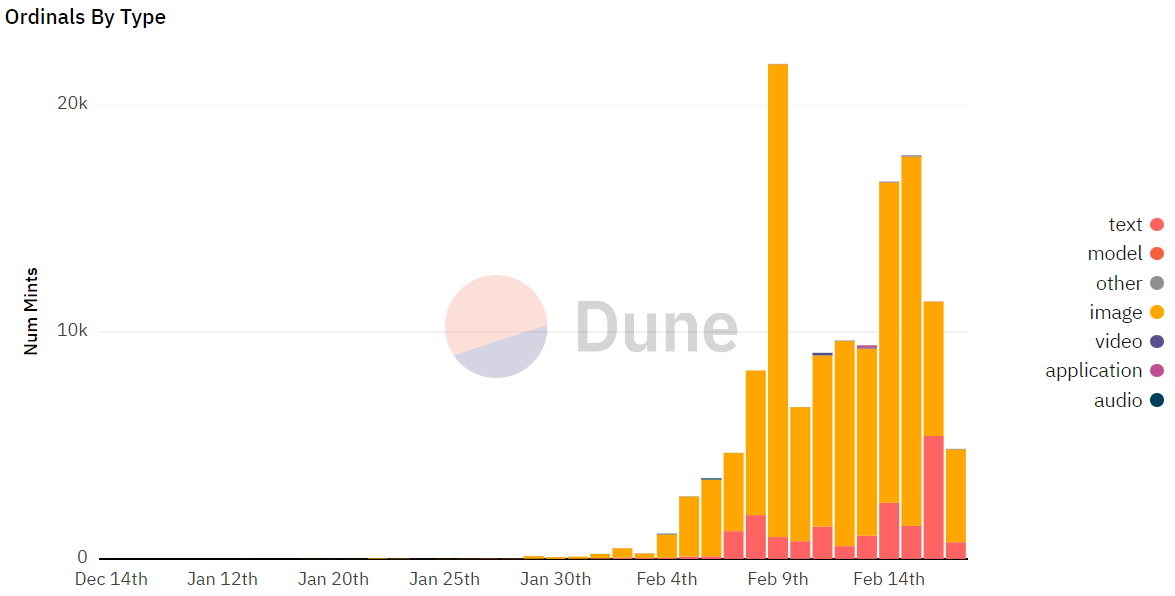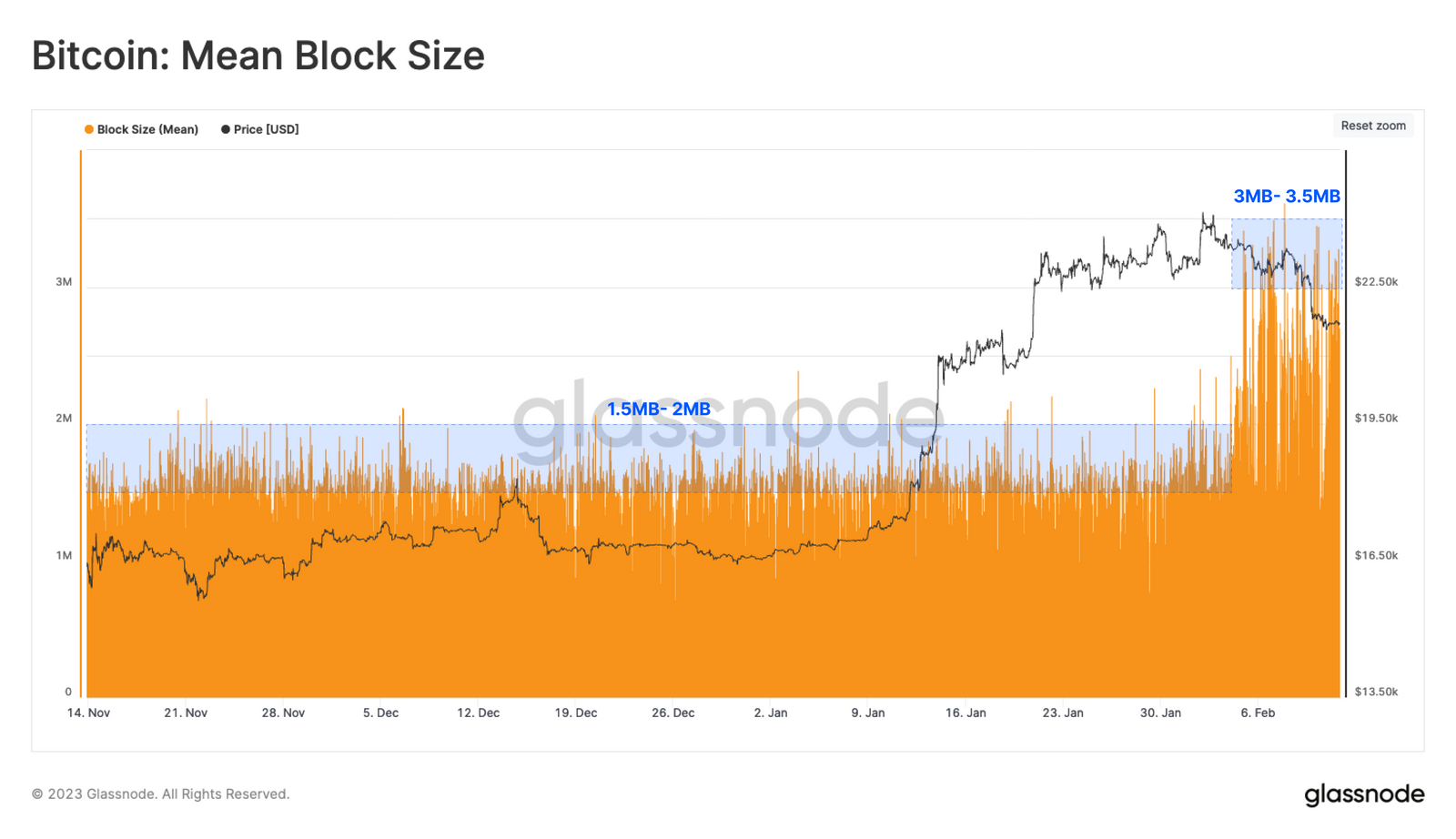The time for Bitcoin holders to look at NFTs from the sidelines is over. Since January, there have been nearly 130,000 Bitcoin Ordinals inscribed to the world’s most powerful computing network. But what challenges do these inscriptions face, and what opportunities, if any, do they present?
Bitcoin Inscriptions (Ordinals) Explained
To understand the emergence of Bitcoin inscriptions as NFTs is to understand the ordinal theory. In computer science, the ordinal theory has been used for decades to sort items based on specific criteria. This is where the ordinal theory got its name – from the Latin word “ordo,” relayed to order or sequence.
For instance, if one would order the size of clothing items based on the waist measurement, this type of data would be called an “ordinal.” This is in contrast to “nominal” data, such as the color of the clothing item, because these items cannot be inherently ordered (sequenced).
Applied to the blockchain space, the ordinal theory is an innovative way in which ordinal data can be ‘inscribed’ to sats or satoshis, as the smallest unit of Bitcoin (0.00000001 BTC). These ordinals are no different than typical Bitcoin transactions, except that the ordinal theory runs the sequence and value of inputs/outputs.
But to understand what that means, we first must understand what UTXO is, standing for Unspent Transaction Output. Whenever a new Bitcoin transaction is generated, it consists of inputs and outputs. This can be viewed in a blockchain explorer, wherein each output specifies the BTC amount that is spendable in a subsequent transaction.

Therefore, when an output transaction is created, it becomes a UTXO, an Unspent Transaction Output that has been previously received in a transaction and can then be used as input for a new one. The whole purpose of the UTXO model is to ensure that Bitcoin input can only be spent once. This is a critical component in preventing double-spending that elevated Bitcoin to ‘sound money’ status.
The Bitcoin Ordinal, equivalent to general NFT content data, is held in these UTXOs. But for such data to translate into a visual or audio stream, the sats inscription has to have a MIME type. In web development, Multipurpose Internet Mail Extension (MIME) is used for clients to identify the type of content sent from a server, which is added to the file’s header.
In addition to MIME, Bitcoin Ordinal consists of the content itself as a byte string, altogether held in a UTXO. Specifically stored in Bitcoin’s on-chain taproot scripts.
Cleverly combining these elements, software engineer Casey Rodarmor first launched the Bitcoin Ordinals protocol in January. It has already accumulated more than one hundred thousands of inscriptions of various qualities and themes.

When clicking on each inscription, one can see the transaction details just like with regular Bitcoin transactions, rendering them as unique value propositions. Going beyond the jpeg format, they can hold audio as well. For example, Inscription 2042 is a one-second ‘wet fart’ sound. Reportedly, it sold for 12.3 BTC on Wednesday, which is ~$280,000.
Casey Rodarmor provided helpful tips on how to determine the rarity level of Ordinals, given their whole on-chain nature and the scarcity of the block space:
- common: Any sat that is not the first sat of its block
- uncommon: The first sat of each block
- rare: The first sat of each difficulty adjustment period
- epic: The first sat of each halving epoch
- legendary: The first sat of each cycle
- mythic: The first sat of the genesis block
However, because there is no official Ordinals marketplace, either centralized or decentralized, sales are difficult to verify. Most Ordinals sales have occurred on private discord channels between Bitcoin node operators.
Are Bitcoin Ordinals Good for the Bitcoin Network?
It is no secret that the NFT market is driven by speculation. Naysayers, Bitcoin maxis included, paint NFTs as not having any intrinsic value, making them subject to the whims of the market. One can only look at YouTube personality Logan Paul to see that. He bought an Azuki Bumblebee NFT for $623,000, only to become worthless.
A year ago, I spent $623,000 on an NFT. Today, it’s worth essentially nothing.
— Logan Paul (@LoganPaul) July 13, 2022
I’ve immortalized this mistake in 99 Originals with an exact replica helmet & outfithttps://t.co/OzBRdQPxUK pic.twitter.com/srD2h4SgO7
In addition to the intrinsic value question, Bitcoin Ordinals differ from typical Ethereum-based NFTs. While their content is held off-chain, such as the Interplanetary File System (IPFS), Ordinals are stored fully on-chain. Rodarmor prefers to call them ‘digital artifacts’ instead of Bitcoin NFTs.
The problem is Bitcoin blockchain space is a scarce commodity. As the world’s largest proof-of-work, its annual energy consumption is on the level of Sweden. In this light, one could make the case that Bitcoin transaction throughput should be reserved for sound money, not digital artifacts.
Nonetheless, there is no denying that Ordinals achieved explosive growth in the last two weeks, with 129,232 Inscriptions generated in total.

Cumulatively, people have spent nearly $1 million on inscription fees. The strain on the Bitcoin network has already manifested as an increase in mean block size. Glassnode reports it went up from the 1.5MB – 2MB range to nearly double that, at 3MB – 3.5MB.

On the upside, Taproot adoption saw a parabolic adoption rise of 9.4% and utilization of 4.2% since Ordinals took root. This is perhaps the most significant Ordinals impact. Because the Taproot upgrade increases Bitcoin’s smart contract flexibility, in addition to reducing resources needed to process transactions, the Taproot adoption uptick can make Bitcoin more scalable.
In turn, if Ordinals have the effect of generating new interest in Bitcoin, its price could benefit as well. As for scaling at large, Lightning Network could also be pushed to new capacity heights. Regarding Ordinals branding, Rodarmor’s framing of Bitcoin NFTs as complete on-chain digital artifacts had the intended adoption effect.
This will likely become a recurring theme, with Ordinals technically superior to Ethereum NFTs that use hybrid off-chain storage solutions.
What Happens Next for Ordinals?
The latest Ordinal development is the Ordinals Wallet. It went live on Thursday as the first Bitcoin wallet to explicitly support Ordinals Inscriptions. Presently, users can store, receive and view Ordinals, while the new features of sending and trading Ordinals are upcoming.
Ahead of the game is Xverse Wallet, launched a day after, with a full inscription feature.
Ready to inscribe BTC Ordinal NFTs?
— Xverse – Ordinals Support LIVE! (@xverseApp) February 15, 2023
For the past year, we’ve focused on building the most advanced Bitcoin wallet.
Today, we’ve launched 1st class support for ordinals.
Try it for yourself using our quick guide below! pic.twitter.com/Lx3Ey5aZV0
The Xverse Wallet makes it possible to generate an Ordinal by simply uploading the image and paying the BTC fee. The emerging Bitcoin marketplace Gamma.io is in charge of the actual inscription process, having already inscribed over 5,000 Ordinals. Combined with the Xverse Wallet, there is no need to run a full Bitcoin node to start your Ordinals venture.
In addition to the Xverse Wallet, Gamma.io also supports the Hiro Wallet. Looking at the pace of rapid Web3 development, in a few months, it is very likely that all Bitcoin wallets will integrate Ordinals functionality.
For the time being, no MetaMask equivalent as a browser wallet for Bitcoin can hold Ordinals. However, to get ahead of the Ordinals game on the desktop, Sparrow Wallet fits the bill.
 tokenist.com
tokenist.com
